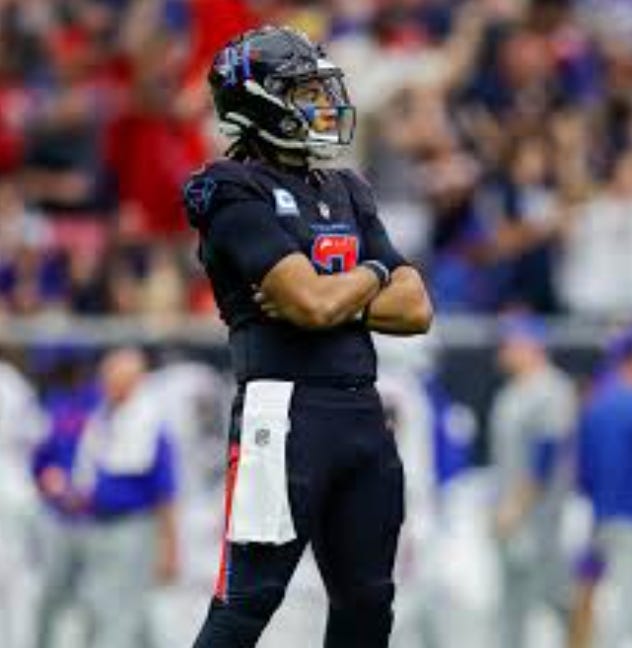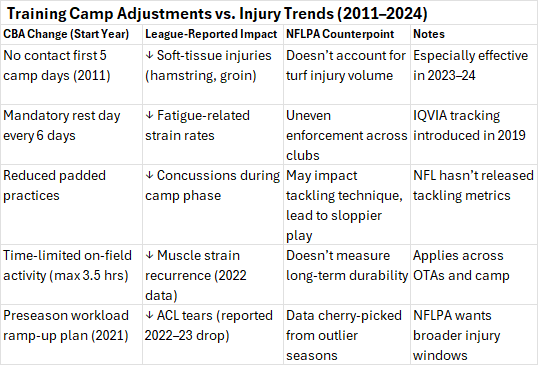
That picture above of my hybrid Crepe Myrtle tree in full bloom means one thing to me: It is time for NFL training camp.
John Madden often said that after the Fourth of July it was football season. He was always eager to start. A couple of years we drove to the El Rancho Tropicana in Santa Rosa, Ca., early and joined the equipment team as it readied camp. Eventually, the Crepe Myrtles blossomed as players and coaches showed up.
Hence, blooming Crepe Myrtles = time for training camp.
Nowadays, we are barraged in 24/7 Twitter time with a ready, fire, aim approach by itchy social media fingers. For weeks, we have been listening to a cacophony of the usual annual noise pretending to be news. In California, we have a saying, accept “no wine…” or whine, “…before its time.”
So, as the subtle lavender plants cycled a couple of times, we waited for the almighty Crepe Myrtles to burst forth. Yeah, that’s our excuse for being AWOL for a while, and we are sticking to it. In reality we were working on other projects that will bear fruit as we get further into the annual process.
We do miss the drama of training camps, which aren’t what they were before the turn of the century. (Gawd, did I really say that?) Back then, training camp was a hellish eight weeks with lots of two-a-days — in pads — and six preseason games.
The NFLPA negotiated its way out of that, ostensibly in the interest of players whose camps now resemble more of a spa retreat with footballs: Four 90-minute, helmet-only workouts a week, followed by mandated “recovery” days, as if pads are too dangerous to wear. Is it any wonder that soft tissue strains and non-contact injuries crept up in shell drills?
Here are some notable issues — not all related to spring injuries — that already hamper teams even before they get to training camp, which begins Saturday for the Los Angeles Chargers.
— Running back Najee Harris (Los Angeles Chargers) sustained a superficial eye injury during a Fourth of July fireworks mishap and is expected to start training camp on the Non-Football Injury list.
— Quarterback Anthony Richardson (Colts) aggravated an AC joint injury in his throwing shoulder. Reports suggest he is recovering and will be ready when the Colts report for camp next Tuesday.
— Offensive tackle Christian Darrisaw (Minnesota Vikings) is recovering from a torn ACL and MCL and was conducting individual drills during minicamp, with the Vikings planning to take his return slowly.
— Quarterback C.J. Stroud (Texans) missed OTAs with what was initially termed a pectoral issue, later clarified as "general" shoulder soreness by head coach DeMeco Ryans. It is not considered a long-term issue.
— Linebacker Jihaad Campbell (Eagles) has concerns potentially related to his college injury history. Philadelphia coaches kept him out of action during the spring and do not expect him to practice until training camp.
— Linebacker Bobby Okereke (Giants) missed multiple OTA practices and had an "odd vibe" surrounding his offseason, possibly due to a lingering back injury from 2024 (or other issues within the organization).
— Offensive tackle Terron Armstead (Miami Dolphins) retired after 12 years in the league, citing chronic knee issues that required pain medication just to be on the field.
— Center Frank Ragnow (Detroit Lions) announced his retirement in June at the age of 29, stating a need to prioritize his health and acknowledging he could no longer give the team his all.
— Quarterback Jordan Travis (N. Y. Jets) retired at age 24 on the advice of medical professionals, related to a leg injury he sustained while playing for Florida State.

This is nothing new. Consider significant setbacks last year at this time:
Soft-tissue strains
Christian McCaffrey (49ers): Grade-2 calf strain in camp, ruled out for all of preseason
Jahmyr Gibbs (Lions): Hamstring strain in mid-August practice, lingered into exhibition games
Jaylen Warren (Steelers): Hamstring tweak in a preseason contest, missed multiple sessions
Sam LaPorta (Lions): Hamstring issue in the second preseason game, day-to-day
MarShawn Lloyd (Packers): Rookie pulled hamstring in preseason opener, shelved week to week
Non-contact foot/ankle woes
Malik Nabers (Giants): Ankle sprain in practice, questioned for early camp appearances
Josh Downs (Colts): High-ankle sprain in training camp
Justin Herbert (Chargers): Plantar fasciitis foot issue, missed early camp work in shells only
Meniscus and tendon tears
J.J. McCarthy (Vikings): Torn meniscus on his preseason debut, shelved for the year
Chris Evans (Bengals): Season-ending patellar tendon rupture during joint practice
Changing times
For about a century, we measured football conditioning in salt stains, cracked knuckles and sore muscles. Now? Recovery starts before exertion. While two-a-days once forged rosters in sweat and soreness, today’s NFL camp prep includes:
Cryotherapy pods: Because no one does hard work in -140°F.
Infrared saunas: Detox without a single padded rep.
IV hydration lounges: Electrolytes straight to the bloodstream, hold the Gatorade.
Yoga sessions and breathwork seminars: Mental reps now count as physical reps.
Sleep pods and biometric stress monitors: Tracking cortisol instead of downfield pursuit.
This shift didn’t happen by accident; it was collectively bargained, performance-optimized, and risk-managed. But in pursuit of the almighty dollar (or euro), seasons (18 games) and travel are extending. While injuries are allegedly dropping, soft-tissue strains and non-contact setbacks suggest something isn’t adapting fast enough.
There is growing attention on how CBA-driven training camp restrictions reshaped injury trends and player readiness.
Key adjustments from the CBA
No contact for first five days: Players begin with conditioning and light gear only.
Max 3.5 hours on field per day: Limits total exposure and fatigue.
Mandatory rest days: Every sixth day is a full recovery day.
Reduced padded practices: Full-contact sessions are fewer and shorter than pre-2011 norms.
Injury impact (league claims)
The NFL has cited declines in soft-tissue injuries, especially hamstring and groin strains, during early camp phases.
ACL tear rates have reportedly dropped in some seasons following ramp-up protocol changes.
The league attributes these improvements to gradual workload increases and surface management policies.
NFLPA pushback
The union argues that less contact doesn’t equal safer conditions, especially on artificial turf.
It challenged the NFL’s use of selective data windows to imply progress.
The NFLPA continues to advocate for grass-only surfaces and more transparency in injury reporting.
What’s missing
There is limited public data on how these restrictions affect long-term durability, tackling proficiency or rookie development.
Some analysts suggest that fewer padded reps may lead to sloppier tackling and more in-season injuries, especially early in the year.
Whatashock! The NFLPA and NFL foist data upon us that suits their respective needs and who is really looking out for the players?
The NFL releases injury data annually as part of its public commitment to player health and safety. That data is compiled by IQVIA, an independent analytics firm, and shared with both the NFLPA and medical committees. The league often highlights year-over-year reductions, such as:
A 29 percent drop in lower extremity strains during training camp in 2023
A 50 percent decline in recurrent strains
A 24 percent decrease in ACL tears compared to prior seasons
These stats are used to support initiatives such as ramp-up periods in camp and surface-management protocols.
But the NFLPA pushes back, arguing that the league sometimes cherry-picks data, especially when comparing grass-versus-turf-injury rates. The union maintains that grass is consistently safer, and that the NFL has used outlier years to suggest parity between surfaces.
For visual clarity, we charted the disparity in perspective between the NFL and the NFLPA regarding the impact from negotiated training camp adjustments. Again, each entity sees things differently — or not at all.

🏈🏈🏈🏈🏈🏈🏈🏈🏈🏈🏈🏈🏈🏈🏈🏈
But we don’t need charts and high-priced reports to know things have changed. Fans can see this as the price to watch games increases, whether in person or via multimedia broadcast, while they can only hope their stars make it through training camp let alone the season.
The league, and its players, traded conditioning for calibration. If that calf tightens mid-shell drill, just blame the biomechanical diagnostics when we once thought it was due to not enough electrolytes or potassium in bananas or avocados. And there were those nasty salt tablets on the sidelines for a quick fix.
Archaic stuff in the performance-enhanced era of the NFL’s current summer spas.
Maybe it’s safer. Maybe it’s smarter. But somewhere between the lavender-scented recovery day and the non-contact hamstring tear, the old-school camp warrior vanished.
Still, when the Crepe Myrtles blossom, we are eager to see this era’s version of training camps as football players prepare for a game with restricted contact, prolific passing, and bloated statistics. Yes, it is a different game than the one that overtook baseball as America’s passion.
But it’s all we have.
🏈🏈🏈🏈🏈🏈🏈🏈🏈🏈🏈🏈🏈🏈🏈🏈
NFL Training Camp Reporting Dates (2025)
Team: Rookies reporting date, veterans reporting date:
Chargers: July 12, July 16
Ravens: July 15, July 22
Bills: July 15, July 22
Dolphins: July 15, July 22
Giants: July 15, July 22
49ers: July 15, July 22
Seahawks: July 15, July 22
Broncos: July 16, July 22
Lions: July 16, July 19
Raiders: July 17, July 22
Browns: July 18, July 22
Packers: July 18, July 22
Commanders: July 18, July 22
Bears: July 19, July 22
Bengals: July 19, July 22
Jaguars: July 19, July 22
Patriots: July 19, July 22
Jets: July 19, July 22
Vikings: July 20, July 22
Panthers: July 21, July 22
Cowboys: July 21, July 21
Colts: July 21, July 22
Chiefs: July 21, July 21
Cardinals: July 22, July 22
Texans: July 22, July 22
Rams: July 22, July 22
Saints: July 22, July 22
Eagles: July 22, July 22
Buccaneers: July 21, July 22
Titans: July 22, July 22
Steelers: July 23, July 23
Falcons: July 23, July 23







Its not like the game is visually different from 2021 to 2024. And passing efficiency actually dropped in 2023 and 2024. Defenses (the better ones) stopped single high coverages that led to big plays on 1st and 2nd down and exclusive use of 2 deep man and zone on 3rd and long.
The 2013-2022 bonkers rise in passing efficiency was due to stubbornly early down run focused defensive coaches. Defensive coaches in general, at head coach too. Demanding running for the sake of running/toughness/nonsense and giving up downs to run in unfavorable defensive looks. They were squashing Chad Pennington (Herm Edwards) and Steve McNair (Jeff Fisher) in their greatest seasons by forcing those QBs to convert 3rd and long all seasons long. The forward thinking offensive coaches transformed the game while stubborn defensive coaches refused to adapt. Until forced out by newer breed.
Except for Bellichik who as early as 1990 postseason saw stopping the pass intelligently (or brutally mugging WRs if the league let him in 1990 and early 2000s) is how u prevent scoring and win. RB Thurman thomas had an SBMVP performance in 1990 SB loss to Bellichiks Giants.